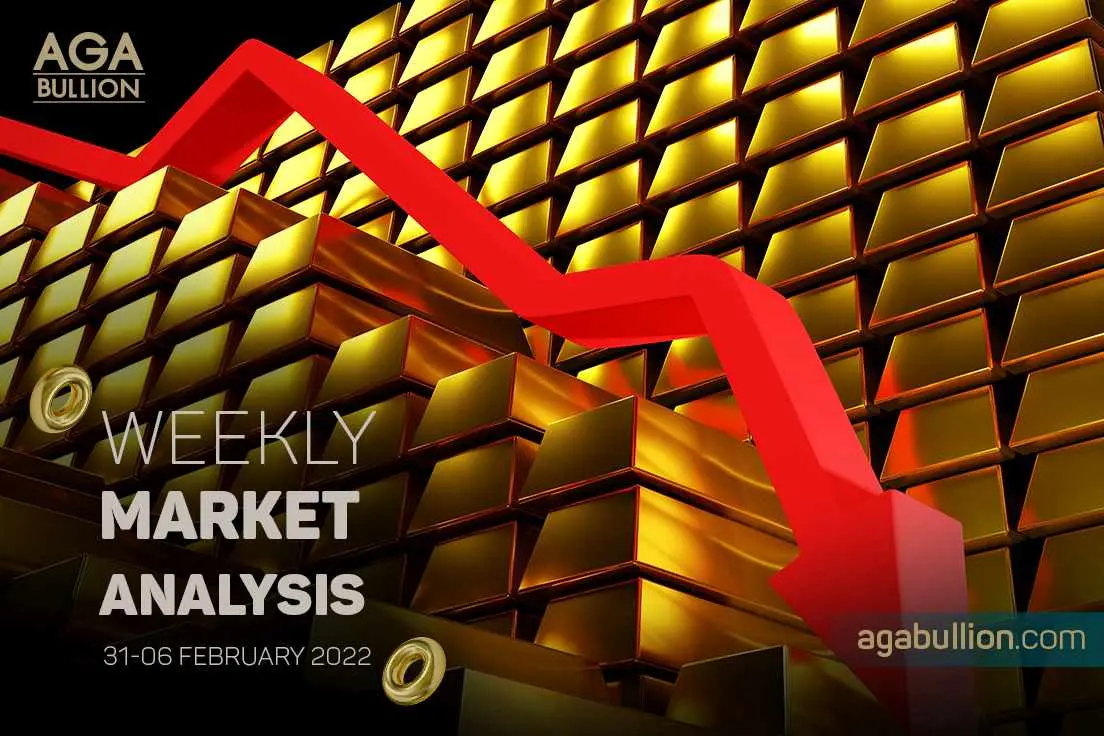Gold suffered heavy losses in the second half of the week
Gold erased all the gains it registered since the beginning of the year in a matter of three days with the US Federal Reserve doubling down on the hawkish policy outlook. Gold climbed to its highest level since November at $1,853 on Wednesday but ended up losing more than 3% from that level to end the week deep in the negative territory below $1,800.
- Fed's hawkish policy outlook has provided a boost to the dollar.
- Gold turns bearish as focus shifts to the US January jobs report.
What happened last week
On Monday, the data from the US revealed that the private sector’s business activity expanded at a much softer pace in January than it did in December with the Markit Manufacturing PPMI and Services PMI declining to 55 and 50.9 respectively. Markets remained risk-averse on weak data and US Treasury bond yields continued to edge lower, allowing gold to build on the previous week’s gains. Although markets remained relatively quiet in the absence of high-tier data releases on Tuesday, XAU/USD managed to advance beyond $1,850 for the first time in nearly two months.
The Fed announced on Wednesday that it left its policy settings unchanged and said that the quantitative easing (QE) program will end in early March as planned. "Indicators of economic activity and employment have continued to strengthen,” the statement further read. During the press conference, however, FOMC Chairman Jerome Powell’s remarks on the policy outlook triggered a dollar rally and caused Gold to fall sharply.
Finally, the BEA's monthly data showed on Friday that the Core Personal Consumption Expenditures (PCE) Price Index rose to 4.9% on a yearly basis in December from 4.7% in November, compared to analysts' estimate of 4.8%. Underlying details of the publication revealed that Personal Spending declined by 0.6% on a monthly basis in December and Personal Income increased by 0.3%.
This week
The ISM will release the Manufacturing and Services PMIs next week but considering how easily the dollar shook off the negative impact of the weak Markit PMI figures, these data are unlikely to hurt the dollar in a significant way even if they fall short of market consensus.
On Thursday, the European Central Bank (ECB) and the Bank of England (BOE) will announce policy decisions.
On Friday, the US Bureau of Labor Statistics will publish the January jobs report. Nonfarm Payrolls are forecast to rise by 238,000 in January following November’s and December’s dismal increases.
Short Term Outlook
A break of $1,795 opens risk towards $1,805 while a move lower will target $1,770 and then $1,755.







